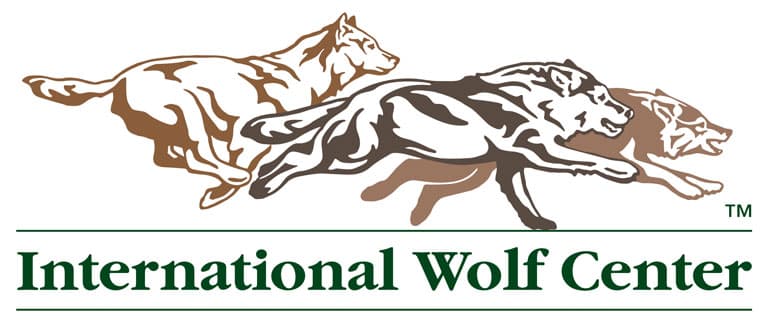From MPR News:
The U.S. Fish and Wildlife Service has agreed to draft a new national recovery plan for gray wolves as part of a legal settlement approved by a federal judge in the District of Columbia.
The agreement comes in response to a lawsuit filed by the Arizona-based Center for Biological Diversity.
The group had challenged the agency’s decision in 2020 to remove most gray wolves from Endangered Species Act protection. A federal court later restored wolf protections in the lower 48 states.
Click here for the full story.

Colorado wolf releases may happen within days after federal judge rejects ranchers’ lawsuit
From The Colorado Sun:
A federal judge has denied a last-ditch effort by ranchers to block wolf reintroduction in Colorado.
Colorado Parks and Wildlife plans to begin capturing gray wolves in Oregon as soon as Sunday and could release the predators as soon as Monday following a decision by U.S. District Court Judge Regina Rodriguez on Friday.
Click here for the full story.
ODFW makes no changes to state’s Wolf Plan after 5-year review; two recent Crook County livestock kills reported
From KTVZ News:
MCMINNVILLE, Ore. (KTVZ) —The Oregon Fish and Wildlife Commission held a workshop on Thursday to discuss the department’s five-year review of the state Wolf Plan and consider next steps, deciding to focus on issues such as wolf-livestock conflicts but deciding no plan changes are needed at present.
Click here for the full story.
Fish and Wildlife Commission adopts new administrative rules on grizzly, wolf management
From the Helena Independent Record:
The Montana Fish and Wildlife Commission adopted new administrative rules Thursday regarding grizzly bear and wolf management that have drawn criticism from environmental and conservation groups throughout the rulemaking process.
The adoption of the rules for both species marks key steps as the state updates its wolf management plan for the first time in two decades and prepares to manage grizzly bears in the event the U.S. Fish and Wildlife Service decides to delist them in the Greater Yellowstone Ecosystem and Northern Continental Divide Ecosystem — a decision currently under review.
Click here for the full story.
Tulare County wolf pack gets a name and is larger than originally believed
From Bakersfield:
A pack of gray wolves discovered in the Tulare County mountains last summer has been named — and is larger than scientists originally believed.
The California Department of Fish and Wildlife on Thursday reported that the wolf pack will now be called the Yowlumni Pack. In a news release, the state agency said it was honored to partner with the Tule River Tribe to name the pack formally.
Click here for the full story.
Colorado wolf reintroduction to move forward as ranchers’ legal effort fails
From Phys.org:
The reintroduction of wolves in Colorado this month will proceed as planned after a federal judge on Friday 15 Dec. denied ranchers’ request to stop the state’s efforts to allow for further environmental analysis.
Click here for the full story.
Colorado wolf releases may happen within days after federal judge rejects ranchers’ lawsuit
From The Colorado Sun:
U.S. District Court Judge Regina Rodriguez agreed with the U.S. Fish and Wildlife Service and Colorado Parks and Wildlife that the wolf reintroduction plan did not require additional federal review
Click here for the full story.
Federal judge rules against ranchers in Colorado wolf lawsuit
From the deseret.com:
Ranchers this week argued the federal government failed to do a sufficient review of the ramifications of the reintroduction of wolves in Colorado, with the case coming under review by a federal judge.
Judge Regina M. Rodriguez ruled late Friday evening against the ranchers, signaling reintroduction can begin in days on the western side of Colorado.
Click here for the full story.
Feds agree to draft new national recovery plan for gray wolves
From MPR News:
The U.S. Fish and Wildlife Service has agreed to draft a new national recovery plan for gray wolves as part of a legal settlement approved by a federal judge in the District of Columbia.
The agreement comes in response to a lawsuit filed by the Arizona-based Center for Biological Diversity.
The group had challenged the agency’s decision in 2020 to remove most gray wolves from Endangered Species Act protection. A federal court later restored wolf protections in the lower 48 states.
Click here for the full story.
Newly-published study examines deer behavior in the presence of wolves
From Outdoor News:
A study recently published by a University of Minnesota research team shines new light on deer behavior, by comparing populations considered “savvy” and “naive” to wolf predation. Dr. Ellen Candler, postdoctoral associate and lead author of the study, said it should be of interest to hunters in that it looks at how humans, their prey, and the predators they share it with all interact and affect each other.
Click here for the full story.
Fish and Wildlife Commission adopts new administrative rules on grizzly, wolf management
From the Daily Montanan:
The Montana Fish and Wildlife Commission adopted new administrative rules Thursday regarding grizzly bear and wolf management that have drawn criticism from environmental and conservation groups throughout the rulemaking process.
The adoption of the rules for both species marks key steps as the state updates its wolf management plan for the first time in two decades and prepares to manage grizzly bears in the event the U.S. Fish and Wildlife Service decides to delist them in the Greater Yellowstone Ecosystem and Northern Continental Divide Ecosystem – a decision currently under review.
Click here for the full story.